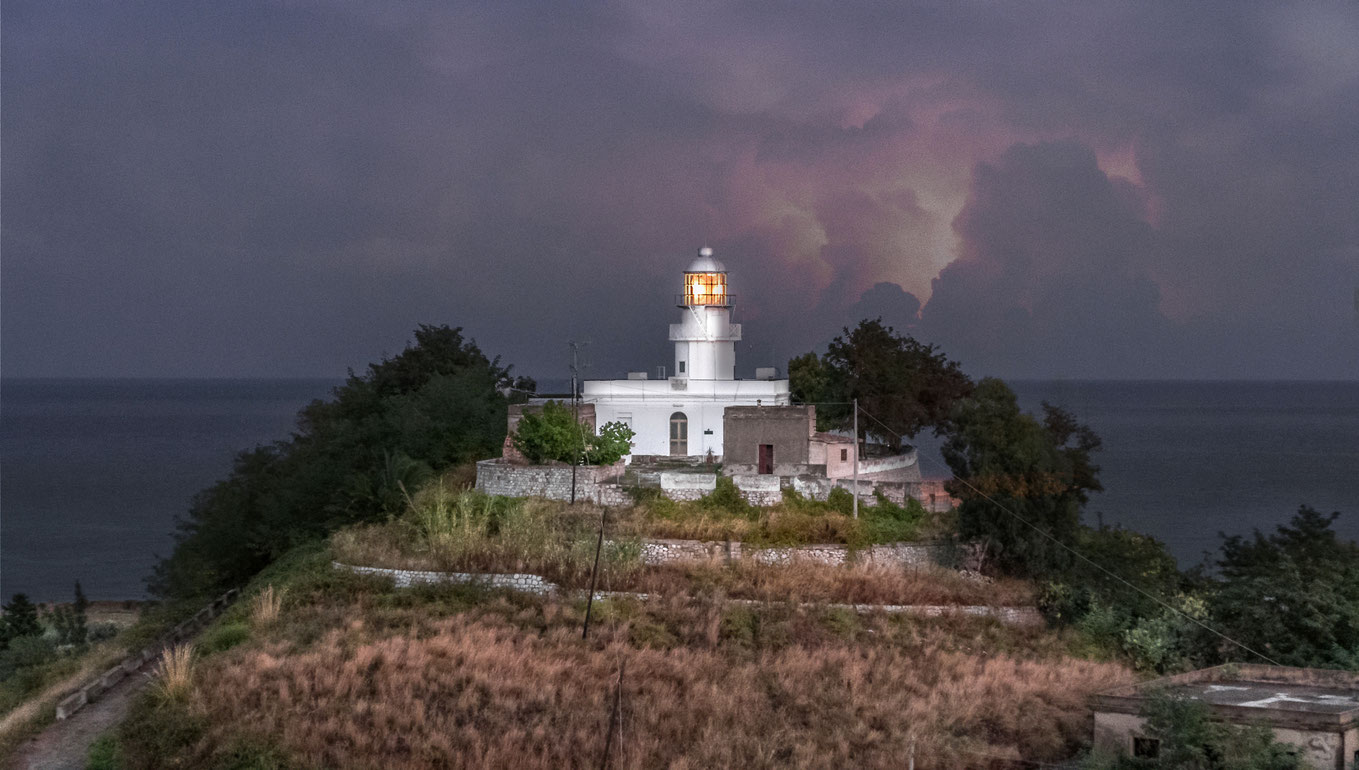Un solo colore
"I seek refuge in the Lord of the dawn," read the words written in Arabic on a ship obliquely docked in a harbor at the opening of Un solo colore. What does ´refuge´ mean: bare rescue from persecution and drowning in the Mediterranean Sea? Does it mean proper accommodations, registration and assessment of requests for asylum? Giusi and Rosario have set up a "Place of Arrival" in the Calabrian hinterlands that goes beyond the obligatory minimum. Instead of living in a centralized camp, 76 asylum seekers are currently being accommodated in several apartments standing empty in the village of Camini. Rather than pass their time in waiting, recently arrived refugees can work within the local framework of the fallow agricultural industry.
Joerg Burger investigates this mesh of humanitarian assistance and local revival with curiosity and unsentimental respect for all those involved. He finds traces of migratory continuity in the hauntingly silent streets and dilapidated housing facades of Camini: During the post-war period, business fled from the poor south of Italy to Turin, Germany, Argentina. Older residents still remember symptoms that accompanied emigrants back then, such as depression and stomach ulcers. Similar ailments suffered by the new guests are later discussed by one of the project coordinators during a conversation about enrollment.
However most importantly, Un solo colore uses the excellent example of Camini to generate pertinent questions regarding Europe´s refugee admissions policy that go beyond the necessities of sheer survival. In addition to the couple heading the project, it is above all several asylum seekers who have their say – not as grateful children but rather as subjects who, despite their explicit appreciation, would prefer to be elsewhere tomorrow, beyond the high stone walls of the village. Is there a form of work, any kind of work, sufficient to a dignified life? Can the Camini model and that of other Calabrian villages be applied to less structurally weak regions? And how much structural paternalism remains embedded in the egalitarian administration of this project?
Burger shifts between interview situations and observational sequences that not only avoid commentary but also do without subtitles: Shots of friendly cohabitation and collaboration retain the opaque density of the everyday rather than being reduced to an abstract idyll. The images are soberly framed, often seen in long shot overviews that simultaneously indicate the necessarily narrow limits of this individual project.
(Joachim Schätz)
Translation: Eve Heller
The tiny municipality of Camini lies 15 kilometres from the Ionic Sea. At first glance, Camini is indistinguishable from the many other villages forgotten by time in the southern Italian province of Reggio di Calabria. But Camini stands out from the rest of the country, the rest of the continent. As the European Union looks on and discusses a humane way to accommodate people forced into migration, in Camini, hosting migrants is seen as an opportunity. (Joerg Burger)
"Un solo colore": Das Dorf an der Grenze, von Michael Pekler, Der Standard, 12.09.2016 (Article)
Wien – Die ersten Einwohner haben Camini in den Fünfzigerjahren Richtung Norditalien und Deutschland verlassen. Es gab keine Arbeit mehr in dem an der Küste des Ionischen Meeres gelegenen Dorf. Manche erinnern sich noch daran, was die Abwanderung damals für die Auswanderer, aber auch für die zurückgelassenen Familien bedeutete – Krankheit, Depression, Angst vor dem Verlust der Angehörigen.
Heute sitzen die alten Männer vor der Taverne und betrachten die Neuankömmlinge offensichtlich mit gemischten Gefühlen. In dem Projekt, das Giusi und Rosario, ein Paar mittleren Alters, für Asylsuchende entwickelt haben und mit vollstem Einsatz verfolgen, sehen nicht alle Einwohner Caminis Vorteile. Die Männer, Frauen und Kinder, die es über das Mittelmeer nach Europa geschafft haben, sollen in den vielen leerstehenden Wohnungen eine Unterkunft finden und im Rahmen des Projekts in der Landwirtschaft mithelfen. Knapp achtzig Asylwerbende leben derzeit in dem kalabrischen Dorf und bringen neues Leben in die alten Häuser und Straßen.
Kein Stranden
Ein aufmerksames Erkunden und genaues Zuhören sind die wichtigsten Vorzüge von Joerg Burgers "Un solo colore". Die erste Hälfte dieses Films mag sich noch dem unermüdlichen Einsatz von Giusi und Rosario widmen, doch Burger versteht es, dem Vorzeigeprojekt spätestens dann mit einem klaren, nüchternen Blick zu begegnen, wenn die Asylwerbenden selbst zu Wort kommen: Bei aller Wertschätzung für die Hilfeleistung geht es ihnen – dem Mädchen, das sich nach Mailand wünscht, ebenso wie der Frau aus Ghana, die ihre eigene Wohnung schätzt – darum, was der Alltag hier für die Zukunft bedeutet. Burger findet wiederholt Bilder eines sozialen und kulturellen Austauschs und macht, als sein eigener Kameramann mit der nötigen Distanz zum Geschehen, dennoch deutlich, dass Weinlese oder abendliches Fußballspiel nur ein erster Schritt sein kann, der die neuen Einwohner woanders hinführen muss.
Vielleicht bekommt man auch deshalb Camini nie zur Gänze in einer Totalen zu sehen, stattdessen am Ende den Leuchtturm an der Küste, der nach wie vor die Schiffe vor dem Stranden warnt. Für manche aber als ein Zeichen der Hoffnung.
(Michael Pekler, Der Standard, 12.09.2016)
Un solo colore
2016
Austria
80 min

